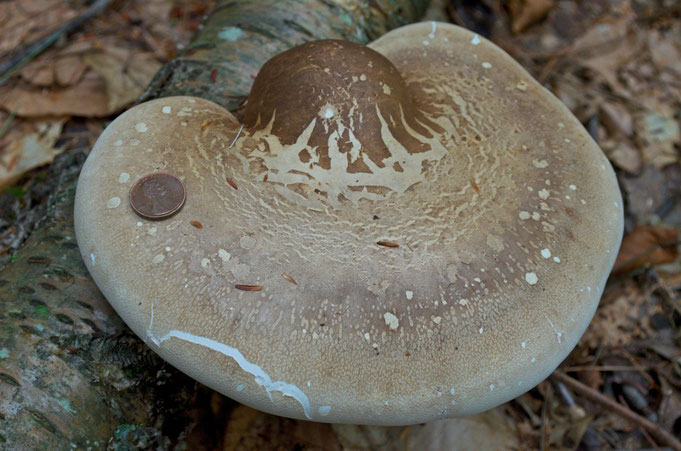fungi/mushrooms · December 10, 2013
Piptoporus betulinus, the Birch Poypore, develops from a small white spherical swelling on the side of dead or living birch trees. It quickly grows into a large shelf-shaped mushroom up to 10 inches (25cm) across. Barbers used to 'strop' or sharpen their razors on strips cut from these polypores, and so they are also sometimes called Razor Strop Fungus. An extremely useful medicinal fungi, Birch Poypore has anti-inflammatory and antibacterial properties. It also contains compounds that are...
fungi/mushrooms · November 20, 2013
Chaga is nothing like a common soft Mushroom. It almost as hard as wood. Known in Russia as the “Gift from God” and the “Fungi of Immortality,” chaga has been used medicinally for thousands of years. The Japanese call it “The Diamond of the Forest,” while in China it is known as the “King of Plants.” Chaga, Inonotus obliquus, is also known as clinker polypore, cinder conk, black mass and birch canker polypore. It is a parasitic fungi on birch and other trees. The sterile conk is...
fungi/mushrooms · September 01, 2013
Gem-studded puffball, Lycoperdon perlatum, are also known as common puffball, warted puffball, or the devil's snuff-box. Puffballs are considered to be a good edible mushroom when young, when the gleba or inside is still homogeneous and white. Nutritional analysis of puffballs indicates that they are a good source of protein, carbohydrates, fats, and several micronutrients.
fungi/mushrooms · April 15, 2013
On one of the first days this spring with no snow cover on the ground, I noticed this group of Scarlet Elf Cup Mushrooms (Sarcoscypha coccinea) on the forest floor. This medium to large mushroom, with its bright scarlet stalked cups, fruits in very early spring, often rising through the snow. These mushrooms are widely distributed in hardwood forests east of the Rocky Mountains, and along the West coast. The Scarlet Elf Cup is a saprobic species, growing on rotting wood. Basswood (Tilia) is the...
fungi/mushrooms · December 05, 2012
The Yellow-orange Fly Agaric, Amanita muscaria var. formosa, is common in the woods at Distant Hill. It is somewhat poisonous and hallucinogenic when consumed by humans, but not deadly like some species of Amanita. The toxins affect the part of the brain that is responsible for fear, turning off the fear emotion. Viking Berserkers , who had a reputation for fierceness, are said to have ingested this mushroom prior to battle. According to Wikipedia, it's called the fly agaric because residents...
May 30, 2012
Hemlock Varnish Shelf mushrooms, Ganoderma tsugae, grow on dead or dying Hemlock trees. There are four species of Hemlock occurring in North America. At Distant Hill Gardens you will only find the Eastern Hemlock, Tsuga canadensis. The Chinese University of Hong Kong in Shatin, Hong Kong, conductrd a scientific study in 2006 and found that extracts of the Hemlock Varnish Shelf, along with extracts from both Ganoderma lucidum and Ganoderma sinense supress breast cancer tumors. In a 2008...
Distant Hill was listed as one of the Top 10 Places to Visit in New Hampshire!
Friends of Distant Hill (dba Distant Hill Gardens and Nature Trail) is a nonprofit,
tax-exempt organization under Section 501(c)(3) of the U.S. Internal Revenue Code.
Donations are tax-deductible as allowed by law. Tax ID# 84-3765898
or send a check via Snail Mail to:
Distant Hill Gardens and Nature Trail, 507 March Hill Road, Walpole, NH 03608







